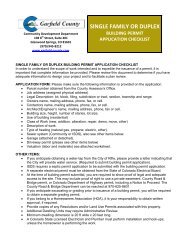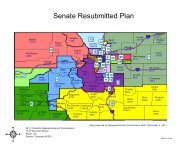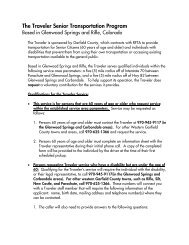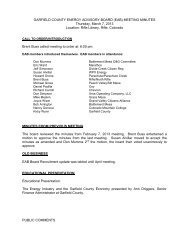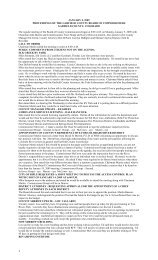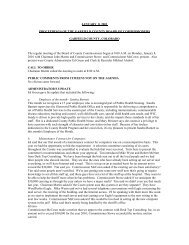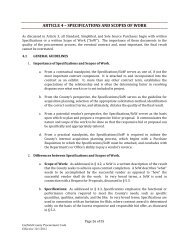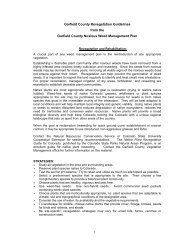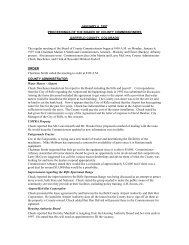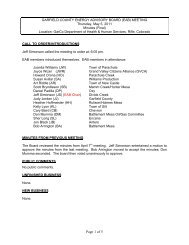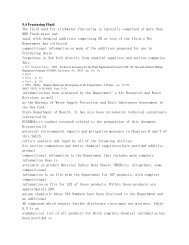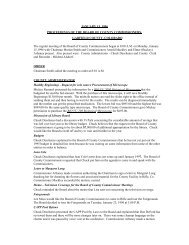Appendix D: Human Health Risk Assessment - Garfield County ...
Appendix D: Human Health Risk Assessment - Garfield County ...
Appendix D: Human Health Risk Assessment - Garfield County ...
Create successful ePaper yourself
Turn your PDF publications into a flip-book with our unique Google optimized e-Paper software.
<strong>Appendix</strong> D Screening Level <strong>Human</strong> <strong>Health</strong> <strong>Risk</strong> <strong>Assessment</strong> February 2011<br />
Battlement Mesa, Colorado <strong>Health</strong> Impact <strong>Assessment</strong> Colorado School of Public <strong>Health</strong><br />
These results indicate that short-term (acute) and sub-chronic exposures to COPCs during<br />
well completion activities have the potential to be significantly greater than overall<br />
ambient air exposures, especially for residents living near the well pads.<br />
2.6.2 Observed Temporal Trends<br />
Temporal trends were evaluated for select COPCs from the five year of data that have<br />
been collected in <strong>Garfield</strong> <strong>County</strong>.<br />
Figure 2-1 illustrates temporal trends for BTEX at the Bell-Melton Ranch monitoring<br />
station from 2005 to 2010. There is a consistent seasonal pattern for BTEX with higher<br />
concentrations in the winter than the summer, with the exception of one high<br />
concentration measured in August 2008. Overall, it does not appear that BTEX<br />
concentrations are increasing at the Bell-Melton Ranch monitoring site.<br />
Figure 2-2 illustrates temporal trends for formaldehyde, crotonaldehyde, and<br />
acetaldehyde at the Bell Melton Ranch monitoring station from 2008 to 2010. A<br />
consistent seasonal pattern for crotonaldehyde is apparent, with the highest<br />
concentrations observed in the summer months. The seasonal pattern is not as apparent<br />
for formaldehyde or acetaldehyde. Overall, it does not appear that carbonyl<br />
concentrations are increasing at the Bell-Melton Ranch monitoring site.<br />
Figure 2-2 also show a formaldehyde outlier in the sample collected in January 2009.<br />
The 95% UCL for formaldehyde was calculated with and without the outlier. The outlier<br />
was retained and not treated separately because the difference between the two 95%<br />
UCLs was less than 10 percent.<br />
<strong>Appendix</strong> D page 19



